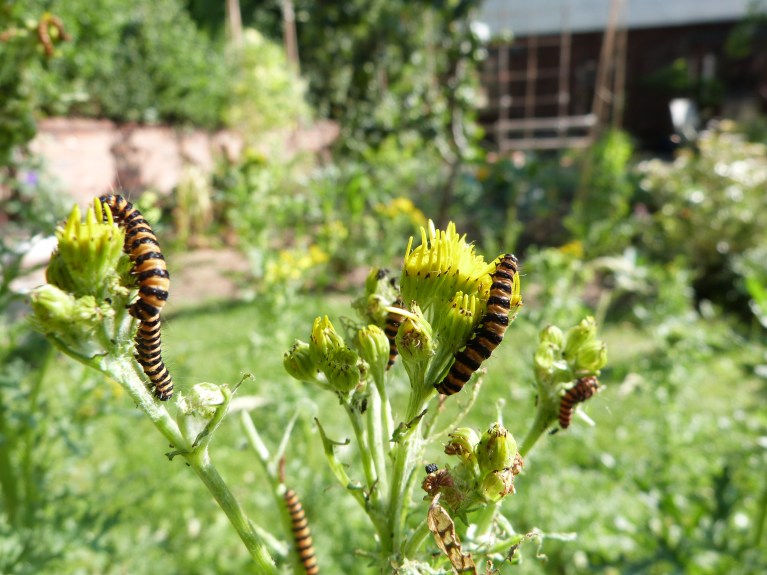The notion that tropical ecosystems are somehow “different” to those at higher latitudes is a pervasive one in ecology and biogeography, that has its roots in the explorations of 18th and 19th century Europeans such as von Humboldt, Darwin, Wallace, and Belt. All of these authors expressed their amazement at the biological riches they observed in their tropical explorations, and how different these habitats were to those they knew from home.
In many ways the tropics are special, of course and we know that they contain many more species than most other parts of the world; indeed my own work has shown that the tropics have significantly more types of functionally specialised pollination systems, and that the proportion of wind pollinated species is lower in tropical communities. However tropical plants are not, on average, more ecologically specialised (that is, they do not use few species of pollinator) and, as the recent guest blog on Dynamic Ecology argued, there is a growing body of evidence to say that overall tropical interactions between species are not stronger and more specialised than those in the temperate zone (though there are others who dispute this and it’s an ongoing debate).
One of the central tenets of the “tropics are special” idea is that the tropics are more colourful; or rather that the biodiversity of the tropics tends to be more garish, gorgeous, and spectrally exuberant, than that of other parts of the globe. Now a new study by Rhiannon Dalrymple, Angela Moles and colleagues, published in the journal Global Ecology and Biogeography, has challenged this idea for flowering plants, birds, and butterflies in Australia, using sophisticated colour analysis rather than relying on human impressions. Following that link will take you to the abstract and you can read it yourself; however I wanted to summarise their findings by quoting from the first section of the discussion in the paper:
“Contrary to predictions…[our]…results have shown that tropical species of birds, butterflies and flowers are not more colourful than their temperate counterparts. In fact…species further away from the equator on average possess a greater diversity of colours, and their colours are more contrasting and more saturated than those seen in tropical species.”
It’s a really, really interesting study that, as the authors say, runs counter to all of our expectations. Gradually ecologists and evolutionary biologists are testing some long-standing assumptions about the tropics and the results are proving to be a challenge to preconceived ideas about patterns in the Earth’s biodiversity.
———————————————
Full disclosure: senior author on the paper Angela Moles was my co-author on that Dynamic Ecology blog, based on which we’ve written a short review article that (hopefully) will be published soon. Other than that I have no vested interest in the study.


Another unrelated question, sorry…do you know of any references that say specialist pollinators are superior to generalists on a per visit basis (or at all)? I can’t find anything from the plant’s perspective on this topic.
PS. I have Larsson 2005, but I’m looking for a bigger scale or review paper…
The Larsson 2005 paper was the one I was going to suggest, though I think that Magnus’s results can be interpreted in a couple of different ways and it’s clear that the specialist visitor is not the most effective pollinator if numbers of visits are taken into account (i.e. “quantity” as well as “quality”).
Otherwise I don’t believe that there’s been a review of the topic – it’s wide open if you want to do one 🙂 Though I can foresee an issue about defining exactly what’s meant by a “specialist flower visitor” – is it from the animal’s or the plant’s perspective?
Exactly! Abundance seems to be largely driving the effect. That is what I’ve found too…it doesn’t matter how good you are, if you’re rare.
By specialist, I mean pollen purity. 🙂
OK, is that purity of pollen actively collected in scopae or purity on the body that’s available for pollination? Again, could be different things 🙂
Well we did body washes, so this is different for most solitary bees compared to the corbiculate bees that mix their scopal pollen with nectar. For most of the bees, the scopal pollen washes off with the rest, but the in the corbiculate bees it does not.
But isn’t it also about where the pollen is placed? So megachilids pack their pollen without nectar, but it’s beneath the body so often not available for pollination.
That depends…some megachilids have a weird behavior where they “pat” their abdomens down on the flower (generally asters) and I can imagine there is a lot of stigmatic contact then too! We looked at behavior on the flower and pollen purity on the body separately in our study.
I wonder if the length of time the plants are in flower could give humans a feeling that the tropics are more colourful? I could not understand from the methods if size was also taken into account. A tiny bright blue butterfly would not have the same impact on a human brain as a huge one. Amelia
Interesting ideas; yes, both are possibilities.
British or European wildlife is very beautiful and often more colourful than we give it credit for; an observation I mentioned while writing about magpies on my 30 Days Wild blog;
“I always think they look like a tropical bird with their shining purple, green and blue feathers. I think that British wildlife is sometimes thought of as a bit dull compared to the rainbow of animals in rainforests around the world but actually our own little creatures can be perfectly colourful and exciting aswell. Think of kingfishers, goldfinches and the common pheasant!”
Thanks for sharing this – very interesting conclusion!
Thanks, yes, I completely agree – though note that the pheasant was introduced from Asia 🙂
Haha indeed. I knew you’d point that out when I wrote it! It stills counts as part of our wildlife to me 🙂